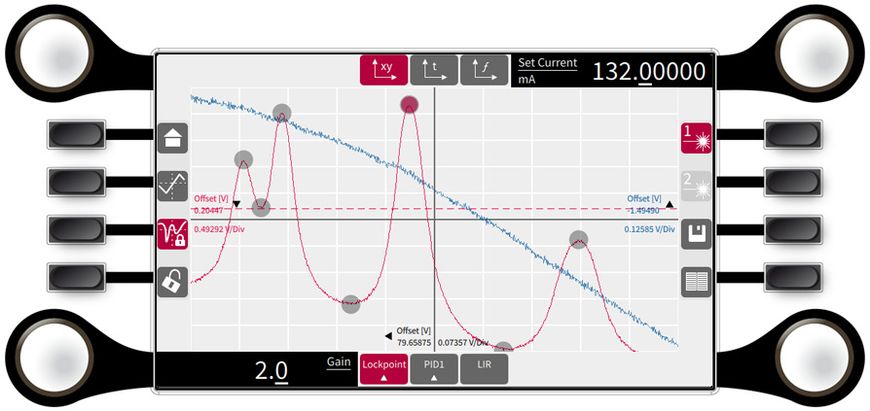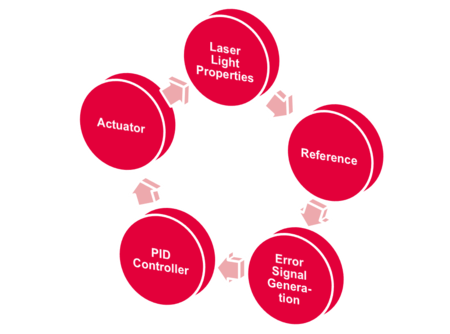Phase and Frequency Locking of Diode Lasers
Technical Tutorial

by Steffen Schmidt-Eberle, Application Engineer Quantum Technologies, TOPTICA Photonics SE
The monochromatic property of laser light is certainly one of its key features. It explains why the emergence of the laser led to a renaissance of traditional fields like atomic and molecular spectroscopy and at the same time triggered the birth of new fields like quantum optics and quantum information processing. This monochromatic property is rooted in the fundamental working principle of the laser that always contains a frequency-selective element. Examples for these elements in the case of diode lasers include external resonators and gratings written into the semiconductor.
These optical methods of frequency selection already lead to very narrow spectral features. However, a closer look reveals that frequency fluctuations occur on different time scales. Considering the diode laser, they can be of very different origin, e.g. fluctuations of the current driving the laser diode, acoustic vibrations and changes of the surrounding air pressure and temperature. To further narrow down the spectral feature, it is therefore necessary to electronically stabilize the phase or frequency of the laser to an external reference. Most generally, whenever a laser property is stabilized to an external reference, this is typically called “laser locking” or “locking”.
Many applications rely on this possibility and requirements concerning the frequency and phase stability keep increasing. While the research field of optical clocks requires extremely narrow linewidths to improve clock precision, other applications in the growing field of quantum technologies, have phase stability of a laser as a critical benchmark.
This collection of application notes provides an introduction to the principles of laser locking in general and to the more practical aspects of phase and frequency locking of diode lasers. The goal of these application notes is to provide the reader with a conceptual understanding of laser locking but also to help them choose the ideal locking solution for their application.
Generic Principle of Phase and Frequency Locking

There are many ways to lock a laser´s phase or frequency. They do, however, all follow the same basic principles based on a feedback loop, which is diagrammatically sketched in Figure 1. Each application note contained in this collection focuses on one element shown in this diagram.
The starting point of every feedback loop is the quantity to be stabilized. Here it is the phase or frequency of laser light. The first application note “Phase and Frequency of Laser Light” introduces some basics concerning these quantities and discusses noise sources which make laser locking necessary.
To see if the frequency changes over time, a reference is needed. Different possible references and their advantages and disadvantages are presented in the application note “Frequency References”.
The application note “Error-Signal Generation” describes how to generate an electronic signal which indicates how much the laser phase or frequency has deviated from a set value. Different schemes of how to generate that error signal are presented. Ideally at the end of this application note the reader knows which reference and which scheme of error signal generation to choose for their specific application and how to set it up.
Subsequently, the error signal is fed into a controller. It further processes the error signal and generates a control signal. Typically, a rather large number of parameters can be chosen to optimize the performance of the lock. In the application note “PID Feedback Controllers” it is discussed why a controller is needed in the first place, the specifics of a PID controller and what defines a good controller.
Finally, the control signal is fed into the so called actuator. It actually changes the frequency or phase depending on the value of the control signal. In the application note “Actuators for Laser Phase and Frequency Control” several ways to change the phase and frequency are presented together with their respective advantages and disadvantages.
To conclude, in the section “Overview of TOPTICA´s Lock Solutions”, a table summarizes the considered lock solutions. It is supposed to help the reader find the most adequate lock solution for their specific application.
